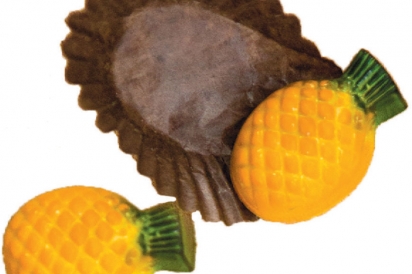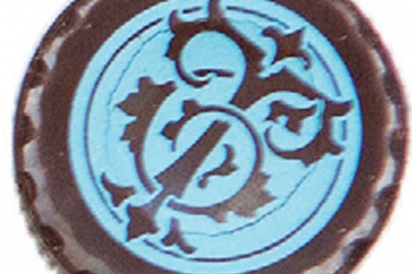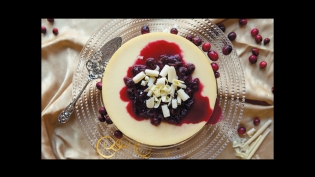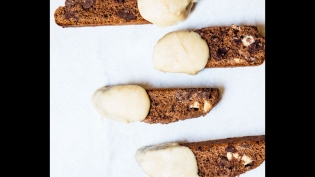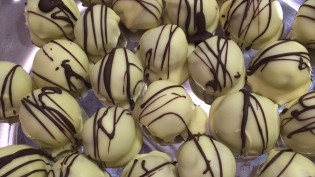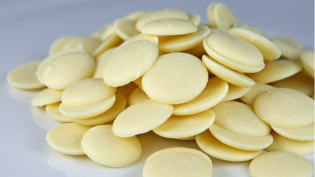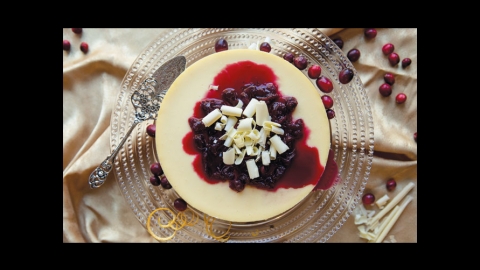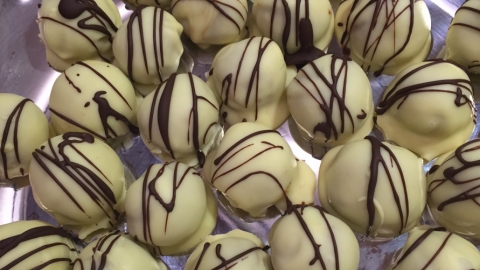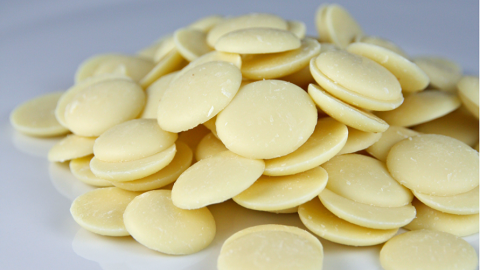Raising the Bar on White Chocolate
Today’s premium white chocolates deserve another try
I’ve tasted a lot of chocolate in my day—creamy, melt-in-your-mouth milk chocolate; nicely bitter dark chocolate; expensive gem-like beauties in fancy boxes and cheap, no-brand, gold foil—wrapped molded shapes. Of the many options available, white chocolate is hard to get right—many brands taste more like vanilla than chocolate, can be cloyingly sweet and can have a chalky mouthfeel.
“Once you had a bad experience it’s hard to convince people they should try a good white chocolate.” says Jean-Michel Carré of Chocolats du CaliBressan in Carpinteria and Santa Barbara.
Fortunately, there is now a growing group of bean-to-bar makers putting out high-quality white chocolate that is satiny, decadent and subtle by focusing on improving the quality of the growing practices in cocoa producing countries, resulting in a higher quality cocoa bean. A higher quality cocoa bean means a white chocolate that can be made using less sugar and other added ingredients that can mask its delicate flavor.
The milky, richness of this new generation of white chocolate is winning over many skeptics. “When people try our Bourguignon [white chocolate and black currant truffle], they are amazed our white chocolate can be so good,” Carré says. “The white chocolate balances the sourness of the black currant, and together they make a perfect chocolate. The same goes for the passion fruit caramel.”
When paired with other ingredients—in truffles, baked goods or a mousse, for example—white chocolate lends a creamy mouthfeel that is the perfect conduit for other flavors to shine through.
Shawn Orr, co-owner of TIFA Chocolate & Gelato in Westlake Village and Agoura Hills who has worked with chocolate for nine years, adds, “I like to have contrast between the fattiness of the white chocolate and other ingredients. When I want a big punch of flavor I use white chocolate.” He likes to pair it with basil and citrus, which cut through the chocolate’s richness.
Still, white chocolate consumption in the U.S. is marginal: Not including truffles or other candy, white chocolate accounts for about 5% of chocolate bar sales, according to market research firm Euromonitor International.
As a niche product, it continues to struggle with a credibility problem: Is it really chocolate? Why does some of it taste like vanilla? Why is it white? Tack on a reputation for being hard to work with (see below for tips) and white chocolate faces an uphill climb for attention among those who favor milk and dark chocolate.
WHITE CHOCOLATE DEFINED
The story of white chocolate’s origins is a little murky. Depending on the source, it was created in the 1930s to use up a surplus of either milk powder or cocoa butter.
What is known is that cocoa beans have two parts—cocoa solids and cocoa butter. Both dark and milk chocolate are made using the whole cocoa bean.
White chocolate is the result of separating cocoa solids from a bean’s cocoa butter during the cocoa powder-making process, says Jennifer Smith, whose Ex Voto Chocolates and Confections produces its own bean-to-bar chocolates to sell at the Ojai Certified Farmers’ Market and is moving to a retail space in Ventura in early 2016.
For this process, she explains, the beans are roasted, ground into a paste (“liquor”) and pressed through a hydraulic press that separates the light-colored cocoa butter from the dark solids, which are ground to make cocoa powder.
Effective 2004 (and revised in 2015) the FDA determined that to be called white chocolate, it must contain a minimum of 20% cocoa butter, a minimum of 14% total milk solids, a minimum of 3.5% milkfat and a maximum of 55% nutritive carbohydrate sweeteners or sugar. Lecithin and vanilla are also commonly added.
Many brands found in supermarkets contain about 20% cocoa butter, which explains why they don’t taste a lot like chocolate.
WHITE CHOCOLATE TODAY
“Farmers I’ve talked to in the Dominican Republic have told me that the productive lifespan of a cacao tree is about 65 years. When it gets to the twilight of its life, the tree puts more fat into the bean itself. A higher fat content means more fat extraction from the bean and more flavor profile because you have more of the product of the bean being pulled out,” says Orr.
White chocolate premium brands like Guittard and Valrhona, which source their beans from older plantations, have as much as 35% cocoa butter—resulting in a product that is creamier and less sweet than other brands.
Chocolates El Rey, a bean-to-bar, single-origin chocolate maker from Venezuela, makes the award-winning Icoa, the white chocolate that both TIFA’s Orr and Ex Voto’s Smith prefer. “El Rey’s Icoa is one of the oldest plantations, so their beans have a higher cocoa butter content,” explains Orr. “Their white chocolate has depth of flavor and you can taste the chocolate.”
“When you limit what you put into the chocolate, as craft makers do with single-origin bars, you get a lot more flavor than people were used to in the past. Over the last 10 years, chocolatiers started using more of this chocolate and consumers were willing to pay more for it,” says Smith.
The success of the single-origin, bean-to-bar makers to market to both professionals and consumers alike, spurred the large chocolate manufacturers, which before only sold to professionals, to improve quality and make their chocolate available to the consumer. As a result, today’s shopper has access to much better quality chocolate, including white chocolate.
So if your last experience with white chocolate left a chalky, sugary feel in your mouth, it’s time to give white chocolate a second chance and explore all the options that premium and craft chocolate makers have to offer.
TIPS FROM THE PROS ON WORKING WITH WHITE CHOCOLATE
Check ingredients: Inferior-quality product can be masked with other flavors. “Avoid white chocolate that uses hydrogenated oils, which give white chocolate a waxy texture. The higher the cocoa butter content, the better,” says Carré.
Color matters: “The fat of the cocoa bean is off-white in color. If white chocolate is too white it means that there’s no white chocolate or bleach has been added, which is not a good thing. Any good-quality white chocolate will be off-white,” says Orr.
Taste: To sample chocolate, rub between your fingers. Smell it (90% of taste is smell, after all), take one bite with your molar, then push it to the roof of your mouth and let it melt in your mouth.
Go low and slow: Due to its high fat content, when melting white chocolate do it at a low temperature.
Heavenly pairs: Chocolate makers’ favorite white chocolate pairings include mint, basil, Chardonnay, citrus, cranberries, passion fruit and black currants.
PREMIUM BRANDS TO GET YOU STARTED ON YOUR WHITE CHOCOLATE JOURNEY
Guittard White Chocolate (31% cocoa butter, Rainforest Alliance and Fair Trade certified), available at Westlake Culinary Institute in Westlake Village (WestlakeCulinaryInstitute.com)
Valrhona Ivoire (35% cocoa butter, fair trade), available at Whole Foods Market in Thousand Oaks (WholeFoodsMarket.com)
Chocolates El Rey Icoa (34% cocoa butter, fair trade, single origin), available online (Chocolates-ElRey.com)
Green & Black’s White Chocolate (30% cocoa butter, organic), available at Rainbow Bridge Natural Foods in Ojai (RainbowBridgeOjai.com)
Cacao Barry Blanc Satin (29.2% cocoa butter), available at Chocolats du CaliBressan in Carpinteria and Santa Barbara (ChocoCaliBressan.com)
Visit EdibleVenturaCounty.com for bonus recipes: Fresh Mint White Chocolate Truffles, courtesy of Jennifer Smith of Ex Voto Chocolates and Confections; and Espresso White Chocolate Fondue, courtesy of Chef Mary Bergin of Westlake Culinary Institute.



